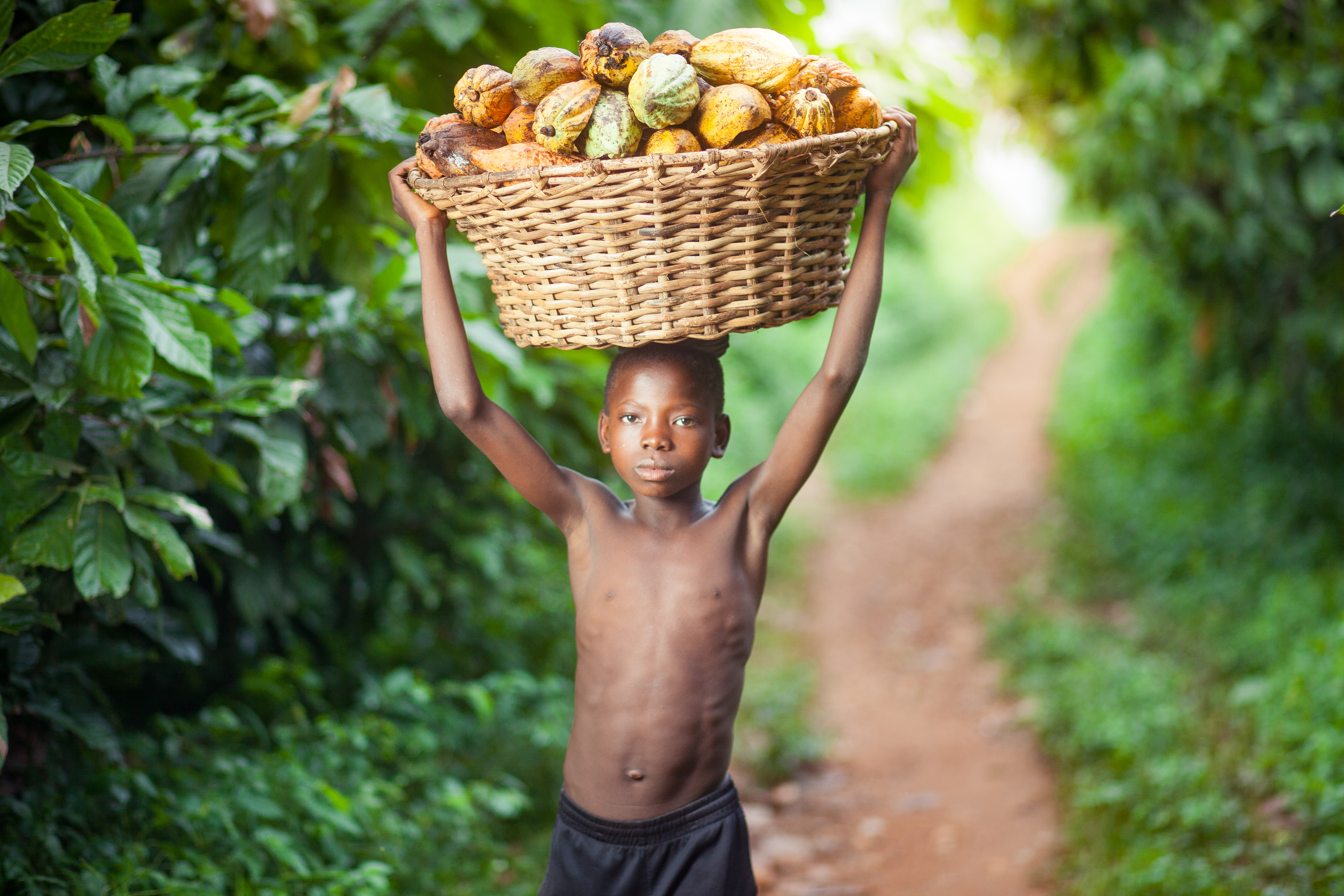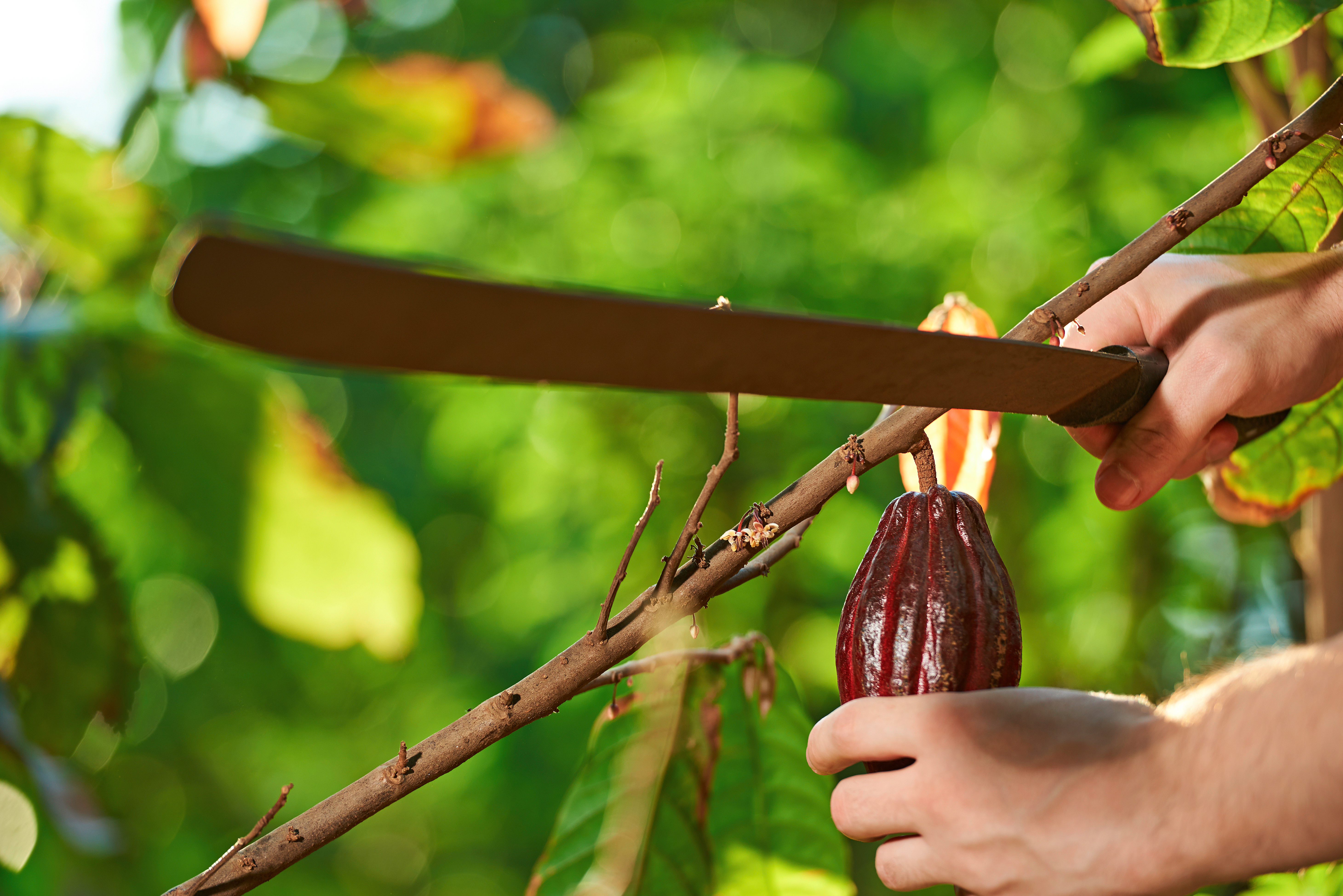"You get very tired when you work so much," [one child] said, showing scars he still has from his machete injuries. "Every day I would wake at six o'clock and go straight to the cocoa farm."
Child labor is worsening around the world. It is estimated that the number of child laborers globally rose from 152 million in 2016 to 160 million in 2020.
1 in 10 children experience child labor.
Child labor occurs all around the world; for example, there are also an estimated 500,000 child laborers in the US agriculture sector. 70% of child labor occurs in agricultural sectors like cocoa, with an estimated 1.5 million child laborers working in Ghana or Cote d’Ivoire.
If all 1.5 million children stood in a line, it would be 284 miles long, which is greater than the distance between Washington, DC and New York City. Or, equal to the entire population of Hawaii. This is a huge number of children who are being harmed just to make chocolate.
Impacts of child labor
Child laborers in cocoa carry heavy loads, work with dangerous tools, and are exposed to hazardous agrichemicals – all of which negatively impacts their health.

Child labor takes a big toll on the health and development of children. A recent study on the prevalence of child labor in the West African cocoa sector found:
- More than 40% of children interviewed reported feeling very tired or exhausted because of child labor.
- 34% of children were in very bad pain.
- 25% felt very sick.
- 12% had to receive medical treatment.
Of the children surveyed, 50% were only 5-11 years old. 57% of the child laborers were boys and 43% were girls.

What do the children have to say about the working conditions?
Child labor in cocoa has been a well-known problem for over two decades; we compiled quotes gathered by media outlets over that time.
“There is no money in Burkina,” said [a child]. “We suffer a lot to get some money there. We came here to be able to have some money to eat.” (Washington Post, 2019)
“I came here to go to school. I haven’t been to school for five years now.” (Washington Post, 2019)
“We are hungry, and we make just a small amount of money.” (Washington Post, 2019)
"I was living in Bouake with my grandmother. But my father sent me here to work. I haven't seen my family for three years." (2011, BBC)
"You get very tired when you work so much," [a child] said, showing scars he still has from his machete injuries. "Every day I would wake at six o'clock and go straight to the cocoa farm." (2011, BBC)
"We spend all the time bent over in the field," one said. "It's terrible," said another. "Hot, tiring work." (2002, BBC)
From a cocoa farmer: “I admit that it is a kind of slavery,” the farmer said. “They are still kids and they have the right to be educated today. But they bring them here to work, and it’s the boss who takes the money.” (Washington Post, 2019)
Help to reform the cocoa industry!
A key driver of child labor in cocoa is farmer poverty. Cocoa farmers make well below a living income, often less than $1 per day, despite the chocolate industry being worth over $100 billion annually. A vast majority of the profits from a chocolate bar sit with corporations, like chocolate brands and retailers. In order for the chocolate industry to be sustainable and free of child labor, the profits must be equally shared with those doing the most work: cocoa farmers.
Take action to end child labor in cocoa





